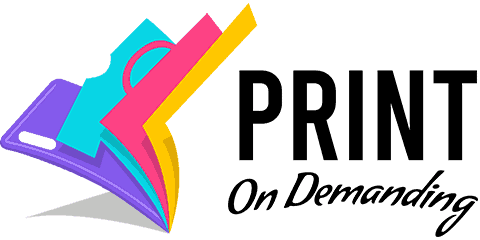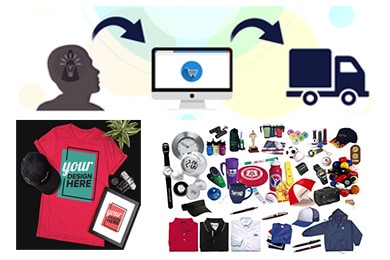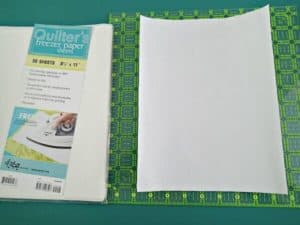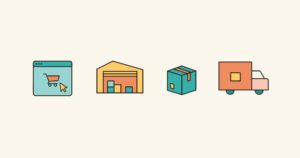
It started as a hobby for you, coming up with original designs and getting them printed on t-shirts. As your sales increased, you began to think of screen-printing tees and other goods as more of an avenue for income. If you were to take your print-on-demand services and market them as a potential job, do you have a good chance of success? Is the market already saturated?
Print-on-demand services are certainly aplenty in 2021, and printing t-shirts may be a little overdone, admittedly. By expanding what you can print and sell and keeping up on what’s trendy among your audience, you can stand out in a busy market.
In this in-depth guide, we’ll take a closer look at 2021’s most popular players in the world of print on demand. We’ll also discuss your money-making potential as a screen-printer and even share some tips to maximize your earnings.
Let’s get started!
Who Are the Most Popular Print-on-Demand Businesses in 2021?
Before you proceed with your own print-on-demand business, it helps to know who else is out there. You may sign up for one of these platforms to create your online store, or you may scope them out to get a closer glimpse at the competition.
This isn’t an exhaustive list by far, but only the biggest names in printing for 2021. New players are cropping up all the time, although whether they’ll survive long-term is anyone’s guess.
Shopify
The first of these big players is Shopify. Founded in 2004 in Canada by Scott Lake, Daniel Weinand, and Tobias Lutke, today, Shopify says it has more than one million businesses operating on its platform.
Not all are print-on-demand necessarily, but rather, any type of online store you want to run. Shopify gives you the blueprint for a successful business, helping you with setting up your store, creating an online presence, and branding yourself. They also have marketing resources for spreading the word about your business.
You can watch a Shopify print-on-demand business setup video here:
It’s quite long (an hour) and goes in-depth, so it could be what you’re looking for to get started with your first Shopify store.
Printful
If you’d rather focus on online platforms that specialize in print on demand, Printful is another big name that isn’t going anywhere in 2021. The company has 800 staff members per most recent data, with offices and fulfillment centers in Latvia, Barcelona, Mexico, California, and North Carolina.
What do you want to print and sell? Printful probably has it. You can shop their platform for clothing like tank tops, hoodies, long-sleeved shirts, t-shirts, shorts, leggings, sweatpants, and embroidered shirts. You can also find aprons, bean bags, towels, wall art, pillows, coffee mugs, hats, socks, jewelry, phone cases, and bags to customize.
Once you buy what you need, you can then open your online store. When a customer orders something from your store, Printful takes care of fulfillment and shipping the order for you.
If you’re thinking of starting a Printful store, don’t miss this video on mistakes to avoid:
Do keep in mind Printful is one of the more expensive print-on-demand options.
Redbubble
You might also start your print-on-demand business on Redbubble. You can get your own customized designs printed and sold on items like clothing, stationery, wall art, phone cases, stickers, pillows, tapestries, shower curtains, mugs, comforters, bathmats, clocks, and coasters on this platform.
Zazzle
Zazzle was founded in 2005, but it hasn’t slowed down at all in 15 years. Jeffrey Beaver, Bobby Beaver, and Robert Beaver, three brothers, started the company in a Redwood City, California garage. Today, Zazzle is one of the best-known print-on-demand platforms.
Your printing options are nearly endless, with items available such as stationery, gift cards, business cards, notebooks, and binders. You can even print on sports goods like ping pong equipment, dartboards, cornhole sets, playing cards, footballs, skateboards, golf equipment, and baseballs.
All the clothing you’d expect to be able to print on is here too, such as shoes, socks, leggings, sweatshirts and hoodies, baby clothes, kids’ clothing, t-shirts, tanks, and more.
Last year, Zazzle unveiled Zazzle Create, a design tool for creating digital and physical products for free. You can check out an introductory video on the feature here:
Threadless
Another print-on-demand business that’s big is Threadless. This Chicago-based platform is also one of the oldest, as Jacob DeHart and Jack Nickell founded it in 2000.
Threadless works a bit differently than some of the other platforms we’ve discussed. Users will submit their designs, then the Threadless community will determine which ones get sold on the website via a vote. This voting period goes on for a week.
Then, from an average of 1,000 designs, only 10 will get picked and printed on all sorts of goods. Also, the designers get $250 in gift cards (worth about $200 in real money) and 20 percent in royalties, but no cash upfront.
TeePublic
Known for their inexpensive shirts (prices start at $14) featuring all your favorite pop culture, film, movie, music, and other franchises, TeePublic is another print-on-demand business we have to talk about. They accept new designers and let you choose from more than 70 items to print on.
Fun fact: TeePublic is owned by Redbubble. TeePublic got its start in 2013 when Josh Abraham and Adam Schwartz started it. You may recognize Abraham’s name as one founder of CollegeHumor and Vimeo.
Watch a handy TeePublic 101 video on YouTube to check out if you’re seriously considering their print-on-demand platform here:
Society6
Another long-standing print-on-demand business is Society6, which is part of the Leaf Group with Livestrong and eHow. The company started in 2009 by an aspiring artist who wanted to share her designs without spending a fortune to do so.
You get a range of products to print your art on, such as wall art, clothing, murals, pillows, blankets, shower curtains, bathmats, comforters, and bags. You can even get your design on a serving tray or cutting board as well as a laptop via a skin.
This YouTube video for getting started on Society6 is updated for 2021, so check it out here:
Teespring
The last print-on-demand platform we want to cover is Teepsring. Founded in 2011 by Evan Stites-Clayton and Walker Williams in Rhode Island, Teespring calls itself a “no risk turn-key solution” for e-commerce businesses.
They will help you with all parts of growing your business outside of designing your products for you. Once you have your design ready, Teespring has Partnership Integrations, Marketing Tools, and the Teespring Boosted Network for enhanced marketing. They also offer order fulfillment services.
Can You Really Make Money with Print on Demand in 2021?
So let’s say you decided to use one of the above print-on-demand platforms to sell your own unique designs on t-shirts, wall prints, and more. Is it possible to make serious money selling your art this way?
It is possible, yes, even in 2021. As a caveat, several factors will dictate how much money you can make. How many designs you have, which products you sell on your store, and how much you promote yourself are all big ones.
The more designs you offer, the more versatility you give your customers. If someone wants art of flowers but all you sell are dragons, then you’re severely limiting your audience. The same is true of selling only t-shirts or hoodies. When a customer finds your store and wants a print-on-demand baby onesie but can’t find it, they’ll search the millions of other online stores to track one down. You then lose out on that money.
One of the biggest determining factors for making money through print on demand is which platform you choose.
The basics of a print-on-demand online store are this: you sign up, register your store, and order goods to be printed. Then your item gets printed and appears in your store (some platforms only print the item if the item is already ordered). When someone buys the item, you make money.
Of course, you don’t get a straight cut of the profits. Your print-on-demand platform also has to make some money. Plus, some platforms don’t follow a model where you get money deposited to an account or sent to the platform for you to do what you want.
Take Threadless’ business model. You’re not getting paid directly for your work, but rather, receiving about $200 in cash guaranteed and then royalties based on how popular your item is. Zazzle is another one that uses a royalty system.
Unlike Threadless, which caps your royalties at 20 percent, you can set your royalties at whatever you’d like on Zazzle. This may sound good, as your earnings potential shoots sky-high. However, the higher your royalties, the more reluctant customers will be to pay that much money for a t-shirt when they can get something similar on any of the print-on-demand platforms we’ve discussed in this article.
That’s why Zazzle store owners are smart. They want to make money off their goods, but they also don’t want to turn away customers, so they keep their royalties at 10 to 35 percent. This still gives you decent earnings, but now the money you make is more on par with Threadless. So Zazzle lures you in with the illusion of freedom, but you won’t use it because you’re shooting yourself in the foot when you do.
That’s not to say you can’t make good money on Zazzle. Here’s a YouTube video from one such person who did:
You can make good money on any platform potentially, but whether it will happen is not as clear.
Affiliate programs could boost your earnings. If you can get in on one of these programs, you may receive referral payments and volume bonuses. On Zazzle, their volume bonus can be as high as 17 percent, and their referral bonus is 15 percent for each sale.
How Much Money Can You Make with Print on Demand?
Before you decide to take the plunge with your print-on-demand business, you need a question answered. How much money will you make?
Again, it’s hard to say. This article on Passive Income presents a model for bringing in $500 a month with your print-on-demand store. That’s a good chunk of change, but it’s hardly enough money to live off. You wouldn’t be able to quit your job and sell your goods full-time, but you could augment the money you’re making with your full-time job, which is nice.
This is a video from Wholesale Ted on YouTube showing that it’s possible to earn much, much more money by printing and selling your own goods. Per month, she was making four, sometimes even five figures, with one of her biggest earning months raking in $14,000. Watch the video here:
It’s important to note that she didn’t pocket all that money. On the month she earned $14k, Wholesale Ted spent more than $3,600 on buying goods to print. That makes her monthly earnings more like $10,400. That’s still nothing to sneeze at, but it’s a lot less than what her earnings category shows.
There’s a huge difference between making $500 a month and $14,000. At first, your earnings might look more like $40 a month if you’re barely selling anything. As you begin to gain traction and build an audience, your earnings could increase to $100 a month, then $500, and maybe someday even on the levels of Wholesale Ted.
Tips for Taking Your Print-on-Demand Business Earnings to the Next Level
To wrap up, here are some tips to keep in mind as you launch your printing business and strive to earn as much as you can.
Make Sure You’re Not Making More Than You’re Spending
With print on demand, it’s easy to fall into a trap. You have to buy the items you want to print. Depending on the cost of these items, you can easily end up spending more than you make when selling your printed goods. Sometimes, your earnings are only dollars or pennies higher.
Don’t skimp on quality for your goods, because if you buy cheap-o products to print on, your customers will catch on and not want to do business with you. That said, shop around on the platforms we’ve discussed. The print-on-demand business has lots and lots of platforms, so if one doesn’t suit you, you can easily find another that will.
Diversify What You Sell
If you go on a site like Printful or Society6 and see a dozen or more categories of goods you can buy, print, and sell, you want to print and sell almost every single item you can. The more, the better.
Diversification ensures that you always have what someone is looking for. It’s like that example we discussed earlier. If a customer wants a baby onesie, you should sell printed baby onesies. If they want wall art for their mother’s birthday or a kids’ t-shirt for a nephew’s Christmas gift, you should have all these items available and ready to print.
It’s also good if the print-on-demand platform you choose has a variety of items that’s always been updated. This keeps your stock current so you can continually impress your customers.
Get in on Popular Items
From time to time, your print-on-demand platform will introduce a product that grows in popularity. Sometimes that’s genuine, and in other cases, it’s due to necessity. Take, for instance, face masks, one of the most popular accessories of 2021 due to the COVID-19 crisis. These are a necessity, but they also sell like hotcakes, as everyone wants reusable masks.
By capitalizing on trends when they emerge, you can ensure your store is at the forefront of your print-on-demand platform. This can earn you new customers and build loyalty with those customers you already have.
Learn Your Audience and What They Want
Speaking of your customers, they’re everything. Rather than just assume you know what they want, ask them! You can send a customer satisfaction survey after the customer receives their order. Include an open-ended response where the customer can tell you what they’d like to see from your store in the future.
Then, compile all this feedback and make sense of it. Some customers may have ideas that aren’t feasible, such as violent imagery or using trademarked intellectual properties on your printed goods. For the doable suggestions, begin incorporating your customer feedback into your printed designs going forward.
Don’t necessarily sell out, so to speak, and betray your original style entirely. There’s a reason your store has grown to the point it has, after all. Find a way to give customers what they want without changing your style too much in the process.
Choose Your Platform Carefully
You can really cut yourself off at the knees if you sign up for the wrong print-on-demand platform. Above, we talked about how Printful is expensive. If you wanted to buy a unisex printed t-shirt to print and sell on Printful, you’d spend $12.95. To then turn around and sell it for $22.95 means your earnings are $10.
It’s the same case with a lot of items on Printful, where you earn about $10 for your item after Printful takes its cut and you factor in what you spent on the item. We’ve written about it on the blog if you want to check it out. You can also watch a short Printful pros and cons video on YouTube here:
If you only make $10 for every item you sell, that means you’d have to sell 10 t-shirts a month to even earn $100. If you wanted to make $500, customers would have to buy 50 of your shirts. For some sellers, that’s very likely to happen, but for newer ones, it’s not that easy.
That’s why you must do your homework. Research your print-on-demand platform of choice inside and out. Watch YouTube videos and read reviews. Understand your earnings potential clearly before you sign up.
Conclusion
Print-on-demand is a popular business model in 2021, and it’s a touch saturated. You have plenty of platforms to choose if you want to start your own online store, but how much money you make can vary depending on what you sell and how popular your store becomes.
With the tips we presented in this article, you’re in good shape to begin bringing in more money from your print-on-demand business. Best of luck!




